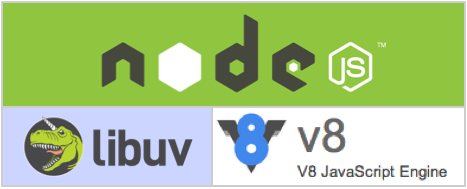Understanding Libuv for Enhanced Node.js Applications Development
 Dr. Alwin Simon
Dr. Alwin Simon
Node.js has become one of the most popular runtime environments for building server-side applications due to its event-driven, non-blocking, and highly scalable nature. At the heart of its success lies LibUV, a powerful library that manages asynchronous I/O and abstracts the underlying operating system interfaces. In this blog post, we will delve into the depths of LibUV, exploring its architecture, features, and how it enhances the performance of Node.js applications.
Introduction to LibUV
LibUV is a multi-platform support library that focuses on enabling asynchronous I/O operations. Originally developed for the popular libev library, LibUV became the foundation for Node.js when it was created by Ryan Dahl. It provides an event loop with a consistent API across different operating systems, allowing developers to write efficient and portable code.
The Architecture of LibUV
At its core, LibUV is responsible for managing an event loop, which forms the backbone of Node.js applications. The event loop is a single-threaded construct that efficiently handles I/O operations and callbacks, making Node.js highly concurrent and scalable.
LibUV leverages the operating system's asynchronous I/O capabilities, such as epoll on Linux and kqueue on macOS, to efficiently handle I/O events. By utilizing operating system-specific features, LibUV manages to achieve high performance and responsiveness.
In addition to the event loop, LibUV provides various utility functions, abstractions, and thread pool management, which we will explore in more detail in the subsequent sections.
Key Features of LibUV
Asynchronous I/O
One of the primary purposes of LibUV is to enable asynchronous I/O operations in Node.js. Traditionally, I/O operations are blocking, meaning the execution halts until the operation completes. However, LibUV allows Node.js applications to perform I/O operations without blocking other activities by utilizing callbacks and event-driven programming.
By leveraging LibUV's asynchronous I/O capabilities, developers can build highly performant systems that can handle thousands of concurrent connections efficiently.
Event Loop
The event loop implemented by LibUV is fundamental to the non-blocking and event-driven nature of Node.js. It continuously monitors I/O events and schedules their corresponding callbacks, ensuring that the application remains responsive.
Under the hood, the event loop employs advanced techniques, such as epoll, kqueue, and IOCP, to efficiently handle I/O events. It intelligently scales the number of active I/O events based on the system's capabilities, providing optimal performance.
Thread Pool
LibUV manages a thread pool to handle costly operations that may block the event loop. By offloading these operations to separate threads, Node.js applications can remain highly responsive, even under heavy workloads.
Examples of operations that utilize the thread pool include cryptographic computations, DNS resolution, and heavy file system operations. LibUV abstracts the complexities of managing threads and provides a simple API for developers to utilize these features.
Cross-Platform Compatibility
One of the standout features of LibUV is its ability to provide a consistent API across different operating systems. This cross-platform compatibility enables developers to write code that can run seamlessly on various platforms, minimizing the need for platform-specific code.
No matter if you are developing on Linux, macOS, or Windows, LibUV ensures that your applications can take full advantage of its features and deliver high performance across different environments.
How LibUV Enhances Node.js Performance
Apart from its features, LibUV plays an instrumental role in enhancing the performance of Node.js applications. Let's explore some of the key aspects that contribute to this performance boost.
Non-Blocking I/O
By utilizing asynchronous I/O operations, LibUV allows Node.js to handle multiple requests concurrently without blocking the event loop. As a result, Node.js applications can handle thousands of concurrent connections efficiently and respond to I/O events promptly.
This non-blocking nature is crucial for building high-performance applications, such as web servers, where handling numerous concurrent requests is necessary.
Efficient Resource Utilization
LibUV manages system resources efficiently by reusing I/O handles across different requests, reducing unnecessary overhead. Additionally, LibUV employs various techniques, such as connection pooling and thread pooling, to ensure that resources are utilized optimally.
These resource optimization strategies enable Node.js applications to scale more effectively and deliver consistent performance even under demanding workloads.
Scalability and Concurrency
The event-driven architecture of LibUV enables Node.js applications to scale horizontally, handling a massive number of concurrent connections. As the event loop focuses solely on I/O operations, other parts of the application, such as the business logic and server-side processing, can run in parallel.
Furthermore, LibUV's thread pool allows for parallel execution of costly operations, such as encryption or file system tasks, without hindering the responsiveness of the event loop. This concurrency further contributes to the performance capabilities of Node.js applications.
Conclusion
In conclusion, LibUV stands as a crucial component of the Node.js ecosystem, providing the necessary tools and abstractions for building high-performance and scalable applications. By managing the event loop, asynchronous I/O, and thread pool, LibUV empowers developers to write code that maximizes resource utilization and delivers excellent performance across different platforms.
Understanding the architecture and key features of LibUV is essential for Node.js developers, as it enables them to optimize their applications, tailor them to different use cases, and harness the full potential of Node.js.
To learn more about LibUV and its advanced concepts, refer to the official documentation and explore real-world projects that showcase the power of Node.js and LibUV integration. So go ahead, dive deeper, and unlock the full potential of Node.js with LibUV!
Subscribe to my newsletter
Read articles from Dr. Alwin Simon directly inside your inbox. Subscribe to the newsletter, and don't miss out.
Written by

Dr. Alwin Simon
Dr. Alwin Simon
Hi there! I'm Alwin Simon, a medico turned engineer driven by an immense passion for technology. I've always been fascinated by the possibilities that lie at the intersection of medicine and engineering, and it's this passion that led me to embark on a remarkable journey. As a self-taught MERN Stack Developer, my focus primarily lies in back-end development. I've invested countless hours honing my skills and gaining a deep understanding of the intricacies involved in building robust and efficient systems. The ever-evolving world of technology never fails to excite me, and I'm constantly pushing myself to learn and stay up-to-date with the latest advancements. In addition to my technical expertise, I have a strong entrepreneurial spirit. I've had the incredible opportunity to co-found, serve as COO, and be a director of a health tech company. These experiences have provided me with invaluable insights into the startup world and taught me the importance of innovation, resilience, and strategic thinking. One aspect that particularly intrigues me is brand building. I firmly believe that a strong brand identity is essential in today's competitive landscape. I'm constantly curious about exploring innovative strategies to create impactful brands and understand the dynamics of connecting with customers on a deeper level. Combining my medical background, engineering skills, startup experience, and interest in brand building, I strive to make a lasting impact in the world of technology. I'm always eager to take on new challenges, expand my knowledge, and push the boundaries of what's possible. Join me on this exciting journey as I continue to explore, learn, and make a difference in the ever-evolving world of technology and innovation. Together, let's shape the future!